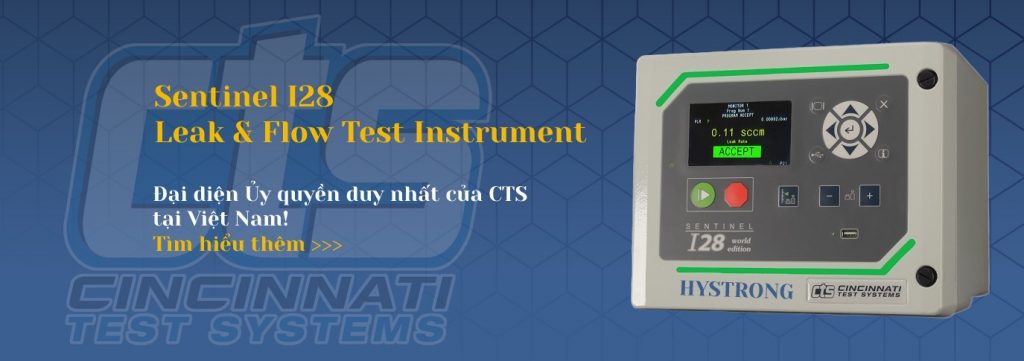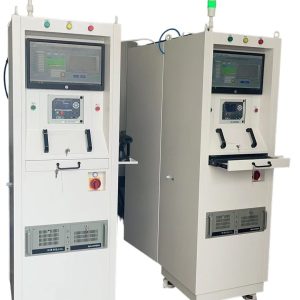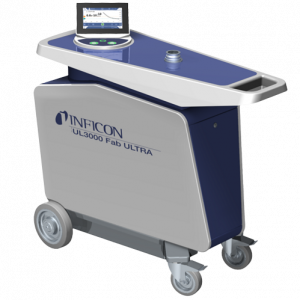Pressure decay leak test is the most commonly used today. Its simplicity makes it easy to automate and to integrate into production/assembly processes.
In simplest terms, the pressure decay test fills a pressure vessel with air until it reaches its target pressure, cuts the air source to isolate the pressure, and measures the decay (loss) of that pressure over a set period of time; any loss in pressure indicates a leak. The sensitivity of the pressure decay method is a function of the test part’s size and the test time. Most tests can be performed rather quickly, with highly accurate results, but the larger the part, the longer the cycle time that is required to achieve an accurate test result.
Benefits of Pressure Decay Leak Testing
- Sensitive enough to detect very small leaks
- Can test in pressure or vacuum environments
- Determines a leak rate based on pressure or vacuum
- Can calibrate to a volumetric flow
- Can report pressure or flow loss (psig or scc/min)
- Provides a simple and highly effective leak test method
CTS’ Pressure Decay Leak Test Systems
Because the pressure decay method is so effective for leak testing and so popular across a wide range of industries and applications, Cincinnati Test Systems (CTS) offers a variety of pressure decay leak test solutions to meet your specific needs.
- Pressure decay – dP and dP/dT (ΔP/ΔT)
- Pressure decay with leak standard calibration
- Differential pressure decay (dP and dP/T)
- Differential pressure with leak standard calibration
- Volumetric Fill (Sealed Device Leak Test)
Pressure Decay Leak Test Accuracy
In most instances, the smallest pressure change that can be detected via pressure decay test is 0.1 Pa/0.001 mbar/0.0000145 psi. Temperature variations can affect accuracy.
Pressure change is directly proportional to leak rate; pressure change can be converted to leak rate if the internal volume of the test article is known, the pressure change is measured accurately, and the duration of the test is recorded. The following equation can be used to convert pressure change to leak rate:
t × Patm
LR = leak rate (scc/s)
dPmeas = pressure loss measured during testing cycle (psig)
dPno-leak = pressure loss for a non-leaking part measured during test time (psig)
V = volume (cm3)
T = time (seconds)
Patm = standard atmospheric pressure (psig)
The Experts in Pressure Decay Test Solutions
Our comprehensive knowledge of factors that influence and affect pressure decay testing enables our pressure leak tester units to avoid many part testing problems that can plague the end user on the production floor. CTS leak test system are engineering to minimize the effects of ambient temperature and reduce test circuit volume for better control. Our straightforward calibration methods are a prime example of the ways in which we provide best value to our customers.
Developing an effective pressure decay leak test system involves much more than simply offering a leak test instrument. We offer a complete family of state-of-the-art leak test instruments that are built on proven mechanical designs and superior control engineering capabilities, and backed with superior application support. We offer a wide range of pressure instruments that can be seamlessly integrated to create a turnkey pressure decay leak test solution. If you’re looking for a one-stop-shop for your leak test needs, CTS is the best and safest choice!
CTS Sentinel Pressure Decay Leak Test Systems
At Cincinnati Test Systems, we take leak testing seriously. We have gained loyal customers all around the world with our full line of Sentinel leak test systems. Our precision engineered Sentinel pressure decay leak detection instruments provide accurate and reliable performance in challenging applications.
—-
Hystrong is the Only Authorized Company of Cincinnati Test System (CTS) in Vietnam, with a team of experienced Technicians.
Contact Hystrong Vietnam for advice on installing the most suitable system! Contact us now >>>
Facebook: CincinnatiVN
Hotline: (+84) 919-995-040 (call/zalo)





